The Para-Textual
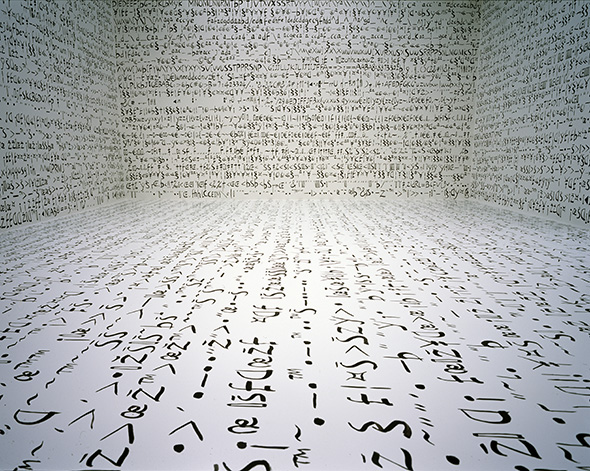
The Para-Textual
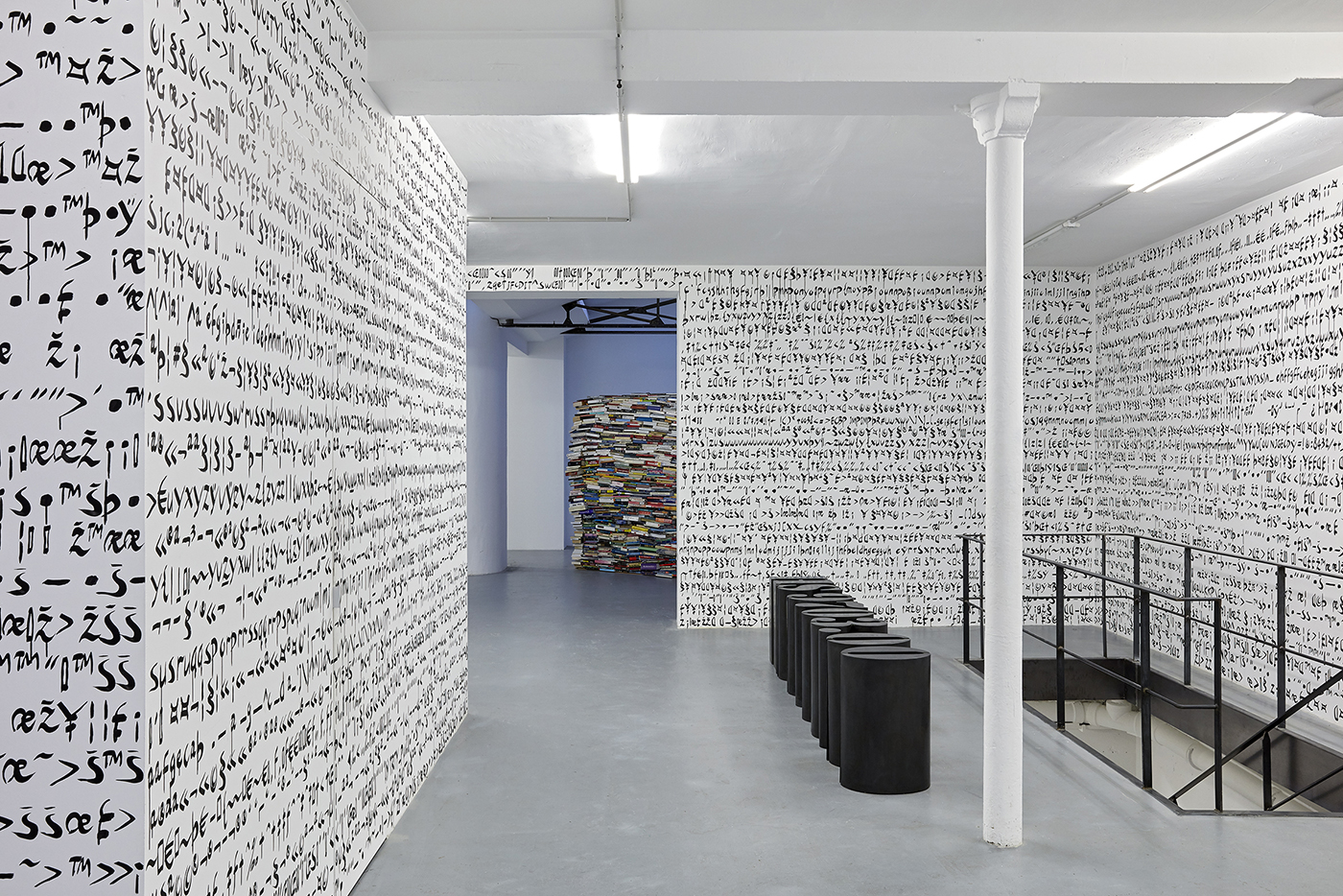
The Para-Textual
Exhibition view at In Situ - fabienne leclerc Paris
© Thomas Lannes

The Para-Textual
Exhibition view at In Situ - fabienne leclerc Paris
© Thomas Lannes
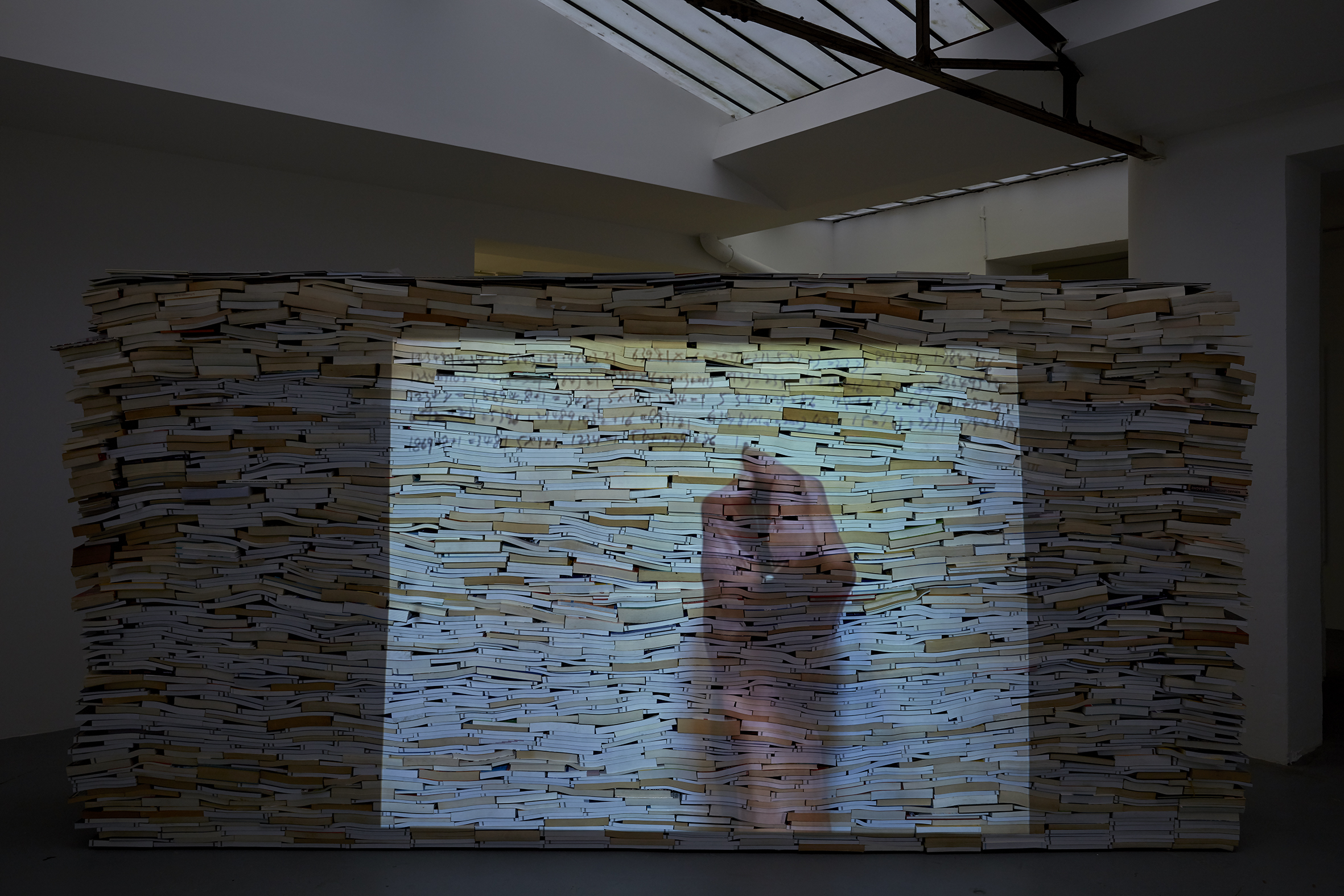
The Para-Textual
Exhibition view at In Situ - fabienne leclerc Paris
© Thomas Lannes
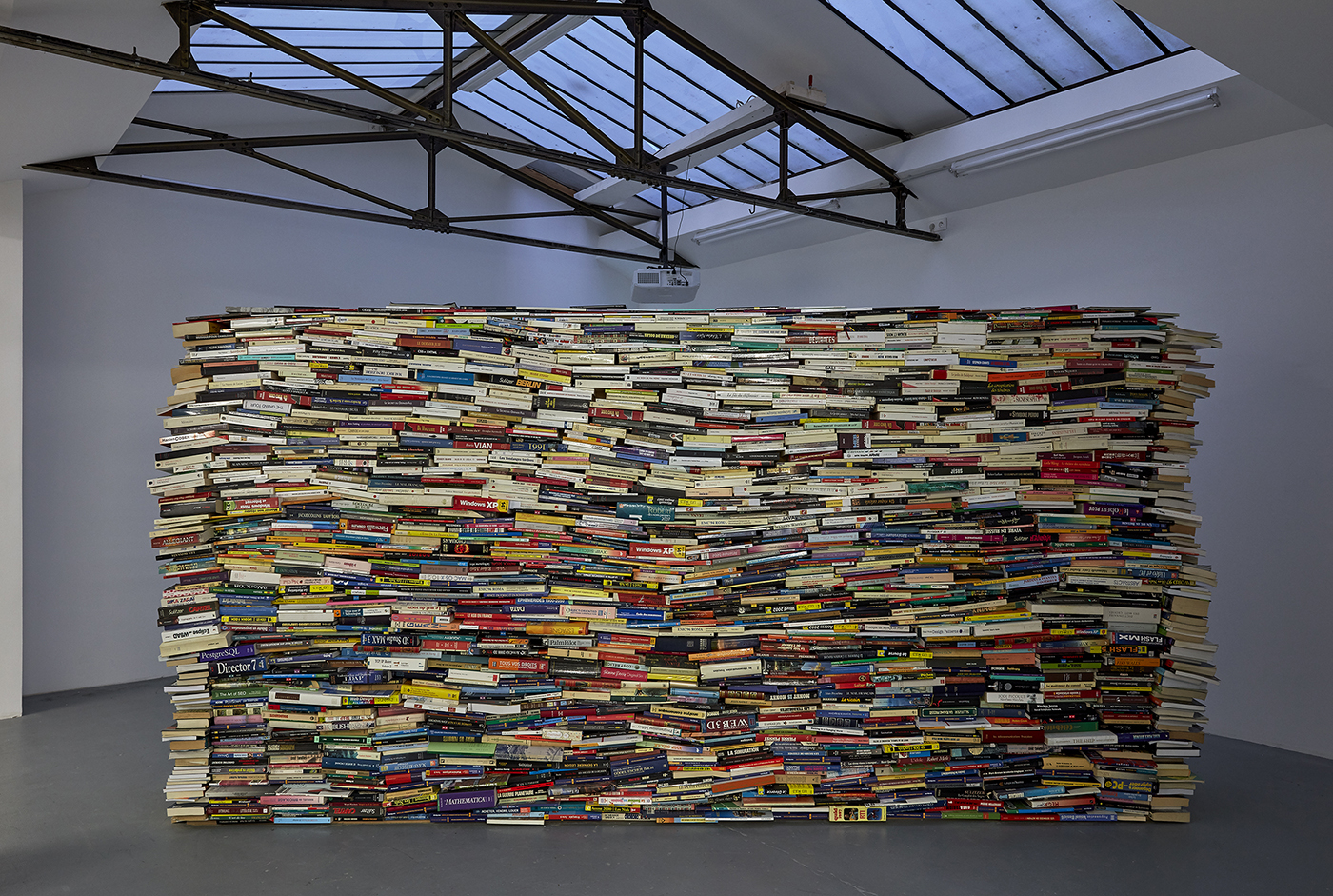
The Para-Textual
Exhibition view at In Situ - fabienne leclerc Paris
© Thomas Lannes
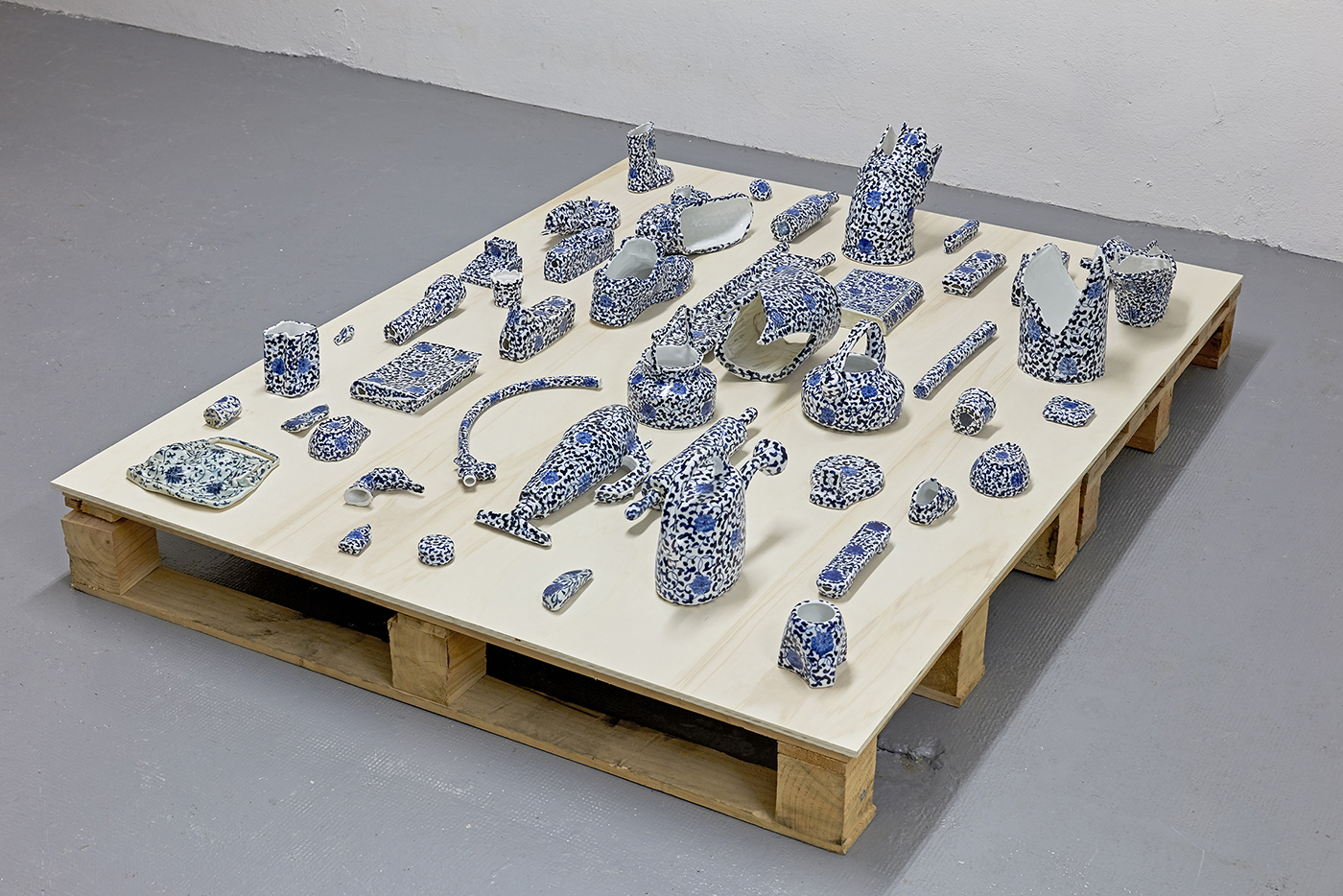
The Para-Textual
Exhibition view at In Situ - fabienne leclerc Paris
© Thomas Lannes

The Para-Textual
Exhibition view at In Situ - fabienne leclerc Paris
© Thomas Lannes
My practice stems from an interest in systems of culture, language, economy and the politics of the everyday. Through photography, video and installation, I seek to explore the simultaneous creation and obliteration of meaning. The attempt to subvert the status quo of the "dominant economic order" and counteract preconceived notions of meaning play a key role within my recent practice, lending the works their political and social dimension.
Warehouse No.10 (1988), Warehouse No.3 (1988) and Statement (1988) are part of the series of works I created in 1988. Mostly situated in disused warehouses, the works existed only as temporary installations. The warehouse itself was chosen as a metaphor for emptiness. In those early works, numbers, mathematical symbols and equations (mostly mistaken) were densely written over the walls, objects and floors, covering the interior or sometimes exterior of warehouses. Sometimes this writing would be further reduced to repeat just one number, the number five for instance. I was searching for a language entirely without meaning, a zero language, so mathematics was the ideal choice. Writing nonsense equations and fragmented symbols. I then reduced this language further into meaninglessness. In this language of degree zero, meaning is no longer the semantic contents but the act of writing itself.
The impossibility of portraying the self takes a central position in Unfinished Self-Portrait (2003-ongoing). The conceptual starting point for this work is my digital passport photo, deconstructed into a sequence of computer code. I use this data to paint in situ on walls, doors, windows and/or floors of exhibition spaces. The near endless sequence of information makes the work virtually incomplete, hence the title Unfinished Self-Portrait. This work-in-progress is by definition reproducible and scalable to different environments, yet in each case the viewer sees an image of writing that is always partial and fragmented. Translating my own body as a stream of continuous code, the very Self becomes a cipher, the very image of meaninglessness and void distributed across disparate and unlikely environments.
Through a process of literal grafting or inscribing oneself to a physical space, the work captures a general sense of loss - the weightlessness of physical body in the time of a technologically generated electronic globalization.
Writing and knowledge production inform the basis of the installation Xeno-Writings (2003). Central to the work is a massive pile of books, representing a hegemonic order of knowledge onto which a video of private writing and "un-writing" is projected. The wall of books creates a physical and mental space on each side, that of inside and outside, central and peripheral, familiar and foreign. On one side the viewer is confronted by an enormous amount of titles, on the other by images of writing without meaning and its erasure. The wall can be seen as a bastion of consolidated knowledge in which a "xeno-writer" negotiaties their position. Xeno-writing is a foreigner's writing, an unfamiliar writing of simultaneous creation and obliteration of meaning.
Writing takes a very different form in Unraveling (2010), a two channel video installation. The juxtaposed images show a female tailor simultaneously unravelling a book and laboriously sewing together what she has undone.
Originally conceived for the library Halle 14 in Leipzig, the work was conceived to investigate the library as a space and institution of knowledge. Jorge Luis Borges compared the universe to a library, a universe made up of letters in which the infinite words correspond to everything that exists. The lexicon in the video can then be understood as a micro universe. As an institution, the library is also a site where knowledge is filtered, consolidated and disseminated. In Borges' universe, might the simultaneous tearing and sewing of the tailor be seen as the "cyclical" and "unending" efforts of "the library project", or unraveling the threads to demystify the "magical canonical books" ? Or, in the institutional space of the library, the humble everyday labor, the "useless labor" is a destabilizing force that unravels the mystery of "the library", the system of knowledge production.
Tautology (2014) is a monochrome video in which a female seamstress sews onto pages from art history books, forming spontaneous yet meticulous patterns onto images featuring Modernist masters. The monotonous sound of the sewing machine and gradually labyrinthine threads are metaphorically a tautological text, a text of female labor superimposed onto the male-dominated discourses of Modernism. It is an inter-text of labor and art. The tautology of the seamstress can be seen as at once uselessly repetitive and logically true in every respect.
In the last several years, overt and covert references to manufacturing and production have formed recurring themes within my artistic practice. Of the Departure and the Arrival (2005) is a project developed in Delft, a place that has long been synonymous for its porcelain industry owing to its history in the import/export trade with China during the 17th and 18th centuries. Utilizing everyday objects collected from the citizens of Delft, I contracted with a factory in Jingdezhen to make molds and reproduce porcelain copies of the items, in the blue-and-white underglaze style characteristic of Delftware. These transformed objects were subsequently transported back to Delft and exhibited in two locations: one was a burger moored near the old VOC house and the other Museum Prinsenhof.
On the ship the objects were displayed together with various documents, photographs and a video installation, in respective compartments of the ship. In Museum Prinsenhof the objects were showcased together with a collection of Delft?s archeological findings. This project rests on a variety of trajectories, from the histories of trade and import/export between Europe and China, to porcelain ceramics as signifiers of Chinese heritage, to the contemporary elucidation of movement, exchange and the circulation of goods in the global economy.
Since 2008, I have been visiting a sex toy factory in Ningbo (China) on a regular basis; taking a lot of photographs and videos, I initially followed a documentary approach. The factory was situated in an idyllic location near a lake, but the workspace and the facilities were shabby and dirty; and curiously the workers in the assembling line were all women. I was told that the factory produced sex toys under the guise of health care equipment, so it operated more or less underground. The final work is entitled The Flowers of Evil (2012). It is an installation consists of many silver colored, curved, circular and geometrically shaped objects that look like industrial moulds. They are actually hard molded transparent plastic casings used for packing sex toys that I collected from the above-mentioned factory. The plastic casings were sprayed with silver car paint to give them an exquisite satin surface. I was intrigued by the apparent contradiction between the working conditions, the unlikely laborers, and what the products are intended for. Sex toys first appeared a century ago as a medical treatment for female hysteria, before gradually becoming a special "prosthesis", as it were, one increasingly visible in our everyday life. The consumption of sexual commodities is a huge market growth area against the backdrop of a widespread tendency in mainstream media toward eroticization and of an emerging permissive hedonistic culture in which "enjoyment is an ideologically inscribed obligation" (?i?ek). It is in this sense that I want to confront this hedonistic culture with something as insignificant as a piece of plastic that evokes a sense of emptiness and futility. The plastic casing comes in as a precise metaphor for the absence of "the real thin". As critic Jaimey Hamilton wrote : "It seems to me that the importance of your pieces is moving from the position of "Enjoy your symptom!" (?i?ek), to giving viewers a few moments of emptiness, or nonsense, or parafiction, in which to appreciate that paradox". The title (The Flowers of Evil) is thus an oxymoron, an unlikely juxtaposition of the beautiful and the ugly, and a paradox.
Issues of industrial production and labor again feature in the video work Shifts (2013), which depicts two workers respectively attending weaving machines in two shifts, in a factory where a clock can be seen hanging overhead. When I shot the video, I had the factory clock modified to run fast so that the clock arms would complete a 24-hour cycle within 3 minutes. The scene was shot with an ultra high-speed camera. I took two eight-second clips and slowed them down to three minutes and thirty seconds respectively. In the resulting video, each worker's movements are virtually frozen (in extreme slow motion), almost like he is floating in the air, while the clock overhead seems to be running in fast motion. The fast running clock precisely covers the duration of the early shift (5:30 AM to 14:30 PM) and the late shift (14:30 PM to 23:30 PM) of the factory in 7:06 Min. filmic time, which is also the total duration of the video.
The video creates a strong visual illusion and perceptual contradiction of simultaneous slowness and fastness, of the immobility of the body, the muted laborer, the endless machines and transient time and life.
If we also regard commercial codification as a form of writing, then HS 9703.00 (2015) sums up several threads running parallel through my work, such as writing, language, production of meaning, commodities, circulation of goods, labor and art. The Harmonized Commodity Description and Coding System, also known as the Harmonized System (HS) of tariff nomenclature is an internationally standardized system of numbers to classify traded products. This classification system categorizes and designates numbers to all tradable objects on the planet. The system turns virtually all imaginable objects in the human world, such as human organs and living animals, into abstract numbers. For me, the HS system is itself a complex universe of objects in a de-materialized numerical form, and also an enormous list of things, inanimate or living, that clarifies how capitalism's process of commodification has steadily encroached into every corner of the material world in which we live. This project takes a critical approach towards both Harmonized System and art, interrogating the meaning of art from the perspective of commodities. HS 9703.00 and HS 9701.10.00 are the respective codes for sculpture and oil painting. Both works' ostensive commercial identity is simultaneously a parody of art and mimicking of commodity. Both works depict nothing but their own HS naming. It can be seen as a twisted kind of mise en abime, in which HS codes recur as the works' titles and their sole contents, or a tautology in which art repeats itself. The works create a short circuit of a symbolic system, a state of zero resistance between the signifier and the signified, in which the names (HS codes, the titles) and the contents are exactly one and the same thing (names no longer represent things, but becomes things themselves). It is a condition when art becomes purely itself, here, it's commercial-self.
This exhibition brings together several key threads running through my practice over the last three decades. At the core of this exhibition is a "meaningless" textual continuation. With its prefix, Para-textual signifies that it is something beyond the textual; it is distinct from yet similar to the textual. Para is an antithetical prefix which indicates at once proximity and distance, similarity and difference, interiority and exteriority. Borrowing also the connotation from literary theory, paratext is all the secondary texts accompanying the main text. As a title it suggests that the exhibition is constituted by peripheral "writings" around a main text that is absent.
Ni Haifeng, «The Para-Textual», 2017